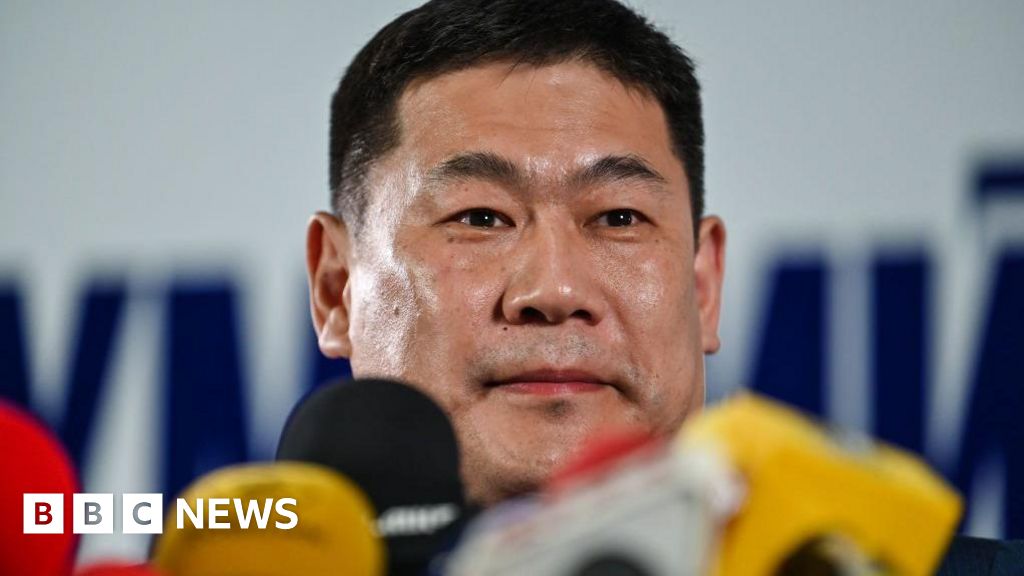ARTICLE AD BOX
A manufacturing plant in Texas plans to power its production with an advanced nuclear reactor instead of natural gas, advancing the Trump administration’s push to unleash commercial nuclear power in the U.S.
When completed, the nation’s first grid-scale advanced nuclear reactor will power a 4,700-acre facility that produces plastics and other materials used in dozens of products.
Dow Chemical and the nuclear energy engineering firm X-energy submitted a construction permit this week to the federal government for a small modular reactor, or SMR, at Dow’s Seadrift, Texas, manufacturing site. The reactor will replace an aging natural gas plant and eliminate nearly all greenhouse gas emissions.
The permit is the first step in an anticipated resurgence in nuclear power. Mr. Trump initiated the nuclear power comeback during his first administration, and nuclear power is now set to skyrocket as the president seeks to rebuild the U.S. manufacturing base and establish the nation as a global leader in artificial intelligence.
X-energy CEO J. Clay Snell said the Dow project “will demonstrate how the technology deployed at Seadrift, Texas, can be quickly and efficiently replicated to meet incredible power demand growth across America.”
Enabling commercial nuclear power projects is a top priority of the Energy Department. Secretary Chris Wright announced in February that the department would “work diligently and creatively to enable the rapid deployment and export of next-generation nuclear technology.”
He is following orders from Mr. Trump, who, just days into his second administration, said he would use an emergency declaration to expedite the building of plants needed to provide energy to artificial intelligence data centers. The president said the plants can use any source of power, including coal, but SMRs are poised to play a pivotal role.
The technology has been in development for years but has never been deployed in the U.S. A handful of SMR plants are running in Russia and China. Under the Trump administration’s pro-nuclear energy policies, SMR plants are poised to advance rapidly.
SMR plants are smaller than traditional water-cooled nuclear power plants and can be built quicker and cheaper.
SMRs can use a variety of coolants, so they do not need to be positioned near large water sources. They produce about a third of the energy of a traditional nuclear reactor.
The multiple modules SMRs allow the plants to conduct maintenance without shutting down entirely, as is required with large-scale nuclear power facilities.
Mr. Trump has been promoting SMR technology since his first term and promised during his 2024 campaign to get SMR plants up and running.
“These can be built ultra-safe. They are ultra-clean, and they’re very low-cost. But they are absolutely safe,” he told voters in York, Pennsylvania, in August.
Big Tech companies have started investing significantly in the plants, hoping they will provide clean energy to power AI technology.
In October, Google touted “the world’s first corporate agreement” with Kairos Power to deploy multiple SMRs in the U.S. beginning in 2030 to provide electricity to Google data centers.
The tech giant said the deal accelerates the advancement of clean, round-the-clock energy needed for power-hungry AI.
Days after Google’s announcement, Amazon said it would invest $500 million in three SMR projects that will power its data centers and provide electricity for homes and businesses.
Amazon’s investments include support for a 320-megawatt X-energy project with the regional utility Energy Northwest in Washington state.
Amazon’s agreement with X-energy pledges to bring 5 gigawatts into the power grid by 2039, which would become the largest commercial deployment of SMR technology.
Other investors include Citadel CEO Kenneth C. Griffin.
Construction of the Dow Seadrift project is expected to begin next year and be completed by the end of the decade. The energy-intensive plant manufactures plastic products such as food containers and drip irrigation tubing. It also manufactures glycols used in antifreeze, polyester fabrics and bottles.
“What attracted them to X-energy was that our plant configuration is four modules that produce about 320 megawatts,” said Carol Lane, X-energy’s vice president of government affairs. “It gives very, very high reliability, which is something that the data centers and AI centers really care about.”
Energy demand in the U.S. is forecast to increase by nearly 16% by 2029, according to GridStrategies, a clean-power consulting firm.
“We are looking at the highest growth in electricity in maybe 30 or 40 years or longer,” Ms. Lane said. “We think these small reactors have a smaller footprint and have a much higher energy density you’ll be able to deploy many of them around the country.”
The Seadrift project is set to become one of the nation’s first operational small modular reactors.
The X-energy project planned for Dow’s Seadrift facility will use helium gas in the reactor core to cool billions of uranium-filled pebbles. The gas flows over the pebbles, heats up to nearly 1,000 degrees Fahrenheit and flows to a steam generator that will power the manufacturing plant.
Kairos Power’s technology, which will provide electricity to Google data centers, will use a molten-salt cooling system to heat a steam turbine that generates power.
The uptick in SMR projects follows the spectacular failure of Oregon-based NuScale Power’s six-reactor project at the Idaho National Laboratory. Mr. Trump’s first administration agreed to fund up to $1.4 billion for the project, which by 2029 was supposed to be generating enough electricity to power 300,000 homes.
The Biden administration also funded the development of the plant. It was canceled in late 2023 because of cost overruns and too few subscriptions from area power providers who were wary of the untested SMR technology.
Big Tech, with its need for reliable energy and desire to cut carbon emissions, is backing the technology. Mr. Trump plans to clear a regulatory path for its advancement.
“If you can get the first ones built and demonstrated, we think the confidence level is just going to continue to increase in terms of where you could put these plants,” Ms. Lane said.

 3 months ago
98
3 months ago
98








 English (US) ·
English (US) ·